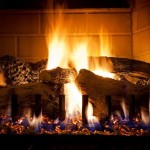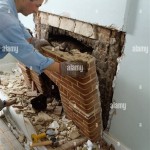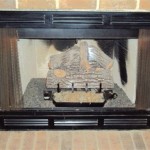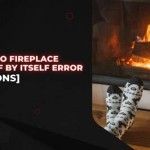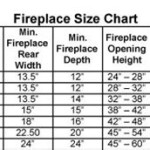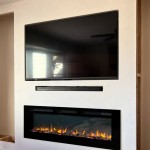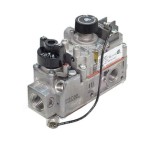Wall Fireplace Gas: A Modern Heating and Aesthetic Solution
Wall fireplace gas units represent a contemporary evolution in home heating and interior design. These appliances offer a blend of functional warmth and visual appeal, providing an efficient heat source while simultaneously acting as a striking focal point within a room. Unlike traditional wood-burning fireplaces, gas wall fireplaces offer convenience, ease of use, and enhanced safety features, making them a popular choice for modern homes.
The design of wall fireplace gas units is diverse, ranging from minimalist, linear styles to more elaborate and traditional appearances. This versatility allows homeowners to select a unit that seamlessly integrates with their existing décor. Installation typically involves mounting the fireplace directly onto a wall, often requiring professional assistance for gas line connections and venting requirements. The availability of ventless models further simplifies installation in some cases, although specific building codes and regulations must be adhered to.
Operationally, wall fireplace gas units are simple to manage. Most models feature electronic ignition and adjustable flame settings, allowing for precise control over heat output and visual ambiance. Remote control operation is a common feature, providing added convenience. Regular maintenance, including periodic inspections of gas lines, burners, and venting systems, is essential to ensure safe and efficient operation.
Efficiency and Heat Output
One of the primary considerations when selecting a wall fireplace gas unit is its efficiency rating and heat output capacity. Efficiency is measured by the Annual Fuel Utilization Efficiency (AFUE), which indicates the percentage of fuel consumed that is converted into usable heat. A higher AFUE rating signifies a more efficient appliance, resulting in lower energy costs. The heat output, typically measured in British Thermal Units (BTUs), determines the amount of heat the fireplace can generate. The appropriate BTU rating depends on the size of the room to be heated and the desired level of warmth.
Wall fireplace gas units are generally more efficient than traditional wood-burning fireplaces. This is due to the controlled combustion process and the ability to precisely regulate the gas flow. The use of sealed combustion systems further enhances efficiency by drawing combustion air from outside the building, minimizing heat loss from the room. In contrast, wood-burning fireplaces often draw air from the room, leading to drafts and reduced overall heating efficiency.
Factors influencing efficiency and heat output include the type of burner used, the design of the firebox, and the presence of features such as modulating gas valves. Modulating valves allow for precise adjustment of the flame height and heat output, optimizing energy consumption and providing a consistent level of warmth. The selection of an appropriate BTU rating for the space is crucial to prevent overheating or insufficient heating.
Safety Features and Considerations
Safety is paramount when it comes to gas-fired appliances. Wall fireplace gas units incorporate various safety features to mitigate potential risks. These features typically include flame failure devices, which automatically shut off the gas supply if the flame is extinguished, preventing the accumulation of unburned gas. Oxygen depletion sensors (ODS) are another common safety component, particularly in ventless models. ODS sensors monitor the oxygen levels in the room and shut off the gas supply if oxygen levels become too low, reducing the risk of carbon monoxide poisoning.
Proper installation is critical to ensuring the safe operation of a wall fireplace gas unit. Installation should be performed by a qualified and licensed professional who is familiar with local building codes and gas piping regulations. This includes ensuring proper venting, if required, and verifying that gas connections are leak-free. Regular inspections and maintenance are also essential to identify and address any potential safety issues before they become hazardous.
Carbon monoxide detectors should be installed in the vicinity of any gas-burning appliance, including wall fireplace gas units. These detectors provide an early warning of carbon monoxide buildup, allowing occupants to take appropriate action to prevent carbon monoxide poisoning. It is also important to ensure that combustible materials, such as curtains and furniture, are kept a safe distance from the fireplace to prevent fire hazards.
Venting Options and Requirements
The venting system is a crucial aspect of wall fireplace gas units, determining how combustion byproducts are safely exhausted from the home. There are primarily two types of venting systems: direct vent and ventless.
Direct vent fireplaces are sealed combustion units that draw air from outside the building for combustion and vent exhaust gases directly outdoors through a dedicated vent pipe. This type of venting system is considered the safest and most efficient, as it prevents combustion byproducts from entering the living space. Direct vent fireplaces are typically more expensive to install than ventless models due to the additional cost and complexity of the venting system.
Ventless fireplaces, also known as vent-free fireplaces, do not require a chimney or vent pipe. They operate by burning gas very cleanly, minimizing the production of harmful emissions. However, ventless fireplaces are not permitted in all jurisdictions due to concerns about indoor air quality and potential health effects. Ventless models consume oxygen from the room during operation, which can lead to oxygen depletion and the buildup of carbon monoxide if the room is not adequately ventilated. If a ventless model is considered, it is crucial to ensure that it meets all applicable safety standards and building codes and that the room is properly ventilated.
Building codes and regulations regarding venting requirements vary by location. It is imperative to consult with local building officials or a qualified HVAC professional to determine the specific venting requirements for a wall fireplace gas unit in a given area. Adherence to these regulations is essential to ensure the safe and legal operation of the appliance.

7 Fireplace Surround Ideas That Will Ignite The Room

Fire Ribbon Direct Vent Slim Gas Fireplace Spark Modern Fires

Gas Fireplaces Fireplace Xtrordinair Made In America

Wall Mounted Gas Fireplace Black Frame Lava Fires

Napoleon Gas Direct Vent Wall Mount Fireplace Whd31 Fireplaces Hvacdirect Com

The Zero Clearance Fireplace Vs Ortal S Cool Wall Technology

Electric Fireplaces A Safe Alternative To Gas Touchstone Home S Inc

Vent Free Archives SÓlas Contemporary Fireplaces

Pin On Beautiful Living

Gas Fireplace From Bellfires Free Bell Wall
Related Posts

